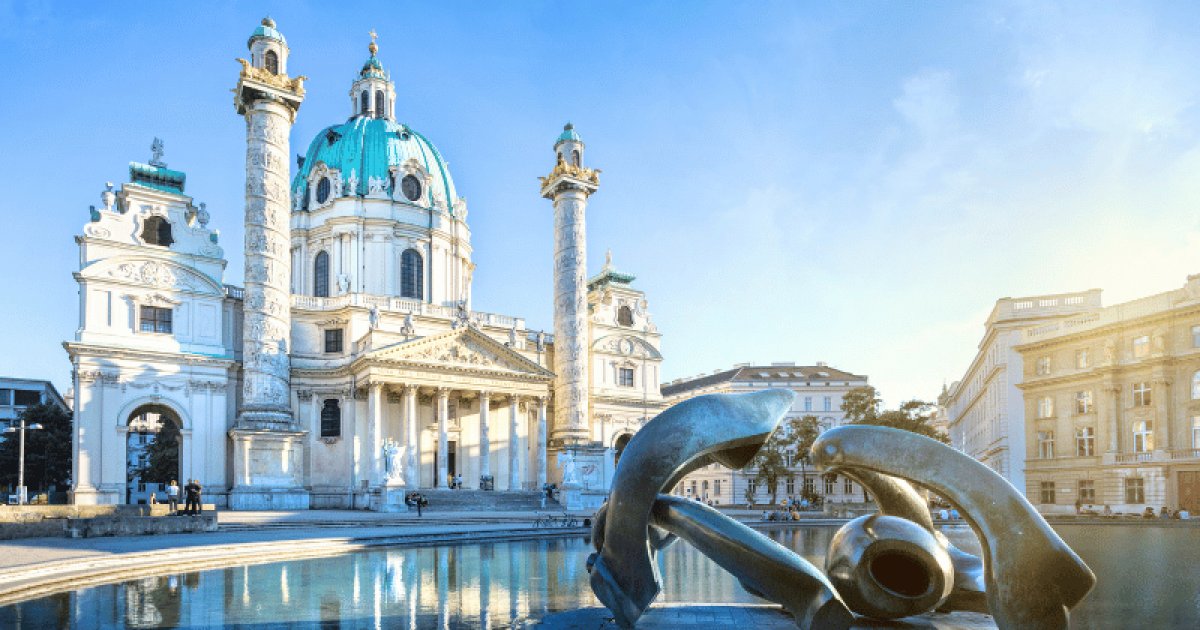KARLSKIRCHE, Presentation
 Language: English / USA
Language: English / USA
Hi, my name’s Rick, and I’m your personal guide. Along with MyWoWo, I’d like to welcome you to one of the Wonders of the World: Karlskirche.
Karlskirche, or the Church of St. Charles, is an authentic masterpiece of sacred architecture in Vienna.
Having averted the danger of the Turkish siege of 1683, and thanks to the victorious military campaigns led by Prince Eugene of Savoy, Vienna also confirmed its historic role as the capital of the Habsburg Empire through the intense production of architectural and decorative works in the city. Thus began the Baroque period in Viennese architecture, initially inspired by the models of the Rome of the Popes, and later with full stylistic and creative autonomy.
An indisputable benchmark construction is the large domed church dedicated to St. Charles, built between 1716 and 1737 on a design by the two architects Fischer von Erlach. The church was commissioned by Emperor Charles IV as a pledge after a plague.
Preceded by a large elliptical fountain, which is emptied of water in winter, the church is imposing and solemn. References to the architecture of the city of Rome, from classical antiquity to the Baroque period, are clearly recognizable in the large dome, the narrow façade between two side towers, and the two columns decorated with bas-reliefs on the life of St. Charles, inspired by Trajan's Column. Signs of renewal are evident, however, in the whimsical crowning of the turrets and in the oval ground plan.
Now press pause, and press play again inside the church.
The vast, bright interior is dominated by the large dome and the magnificent high altar. Particularly interesting is the pictorial decoration of the dome and the altars.
A large altarpiece by Sebastiano Ricci, depicting the Assumption of the Virgin, and another by Giovanni Antonio Pellegrini, played a benchmark role for local artists seeking inspiration from Italian-style works. The dome depicts the apotheosis of St. Charles, frescoed by Johann Michael Rottmayr, one of Austria's most imaginative 18th-century painters.
You can climb up to the gallery and outside the dome for a striking perspective on the church, allowing you to observe the frescoes up close, and enjoy unparalleled views of the city.
Let me leave you with an interesting fact. In the vast square in front of the church, turn your back to the façade and admire a magnificent example of architecture and decoration: the Art Nouveau-style pavilions of the subway stop, designed by Otto Wagner.



